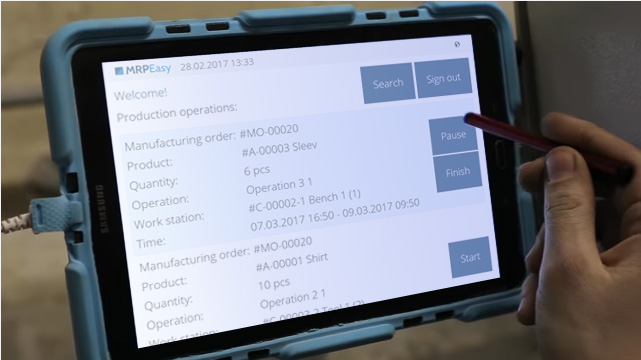What Are the Challenges in Manufacturing and How to Face Them?
The challenges faced in manufacturing become more acute as conditions change. These suggestions may help your business stay on top of its game.

You can also listen to this article:
The manufacturing industry is growing constantly, regardless of the numerous challenges that it comes across every day. These challenges are internal, where proper techniques are needed to make processes more efficient, and also external, where economic conditions, customer’s preferences, and unexpected global events can change the way businesses perform.
We will delve into some of the challenges that the manufacturing field faces and give suggestions for overcoming them. There is no one magic formula to solve them, but the tips can help guide your decisions.
Fierce Global Competition
You are not alone. You are one of the many players within the global market. There are many contenders offering competitive products with high quality and the right speed. Sometimes they are in the same region as you, sometimes not.
Thanks to globalization, anyone can become a worldwide player, which is an opportunity and a threat at the same time.
How to face this challenge?
- Define your business strategy and what market needs your manufacturing business will meet.
- Define your core capabilities, for example, taking advantage of the economy of scale to reduce the cost, focusing on providing a specific solution within your region, or offering valuable resources that take time to procure.
- Set the right business strategy, either by offering product differentiation, filling a specific market niche, or taking a low-cost approach.
Need for Reliable Partners
Since there is no business performing alone in the global markets, everyone is exposed to multiple processes and takes part in multiple supply chains. Whether your business performs globally or at a regional scale, it will do best with the best partners around. You need not only reliable suppliers in transforming your raw materials into final products and taking them to the consumers but also distribution partners or Third-party logistics (3PLs), wholesalers, retail software solutions, and other service providers.
How to face this challenge?
- Develop a business structure in which the customers take the primary position.
- Join partners oriented to fulfilling the needs of the end consumer
- Get good ERP/CRM software to establish better functioning customer relationships.
- Share information with all your key partners
- Strengthen the relationship with key suppliers by setting common goals.
- Consider partners that add value to your product or contribute to improve your business processes.
- Perform periodic evaluations of your partners and make the necessary corrections.
The Ever-Accelerating Pace of Manufacture and Delivery
Process speed is a necessity. If you are not present with the product your customer requires at the right time, others will be. Therefore, your business processes need to be as fast as possible. That could be achieved by adopting the right machinery, process method, or by selecting the right transportation for your products.
How to face this challenge?
- Collaboration with your partners gives you the advantage of gaining visibility and therefore the ability to optimize for speed. If you take part in a collaborative supply chain network, your retailing partners can provide an immediate response regarding customer demand. That can help you get more accurate forecasts and prevent the bullwhip effect.
- Ensure that the transportation mode chosen is the most effective in terms of speed, amongst other factors
- Detect any wastes throughout your supply chain, which means finding activities that do not add value to the product and customers are not willing to pay for.
- Adapt your inventory levels to the demand, helping to speed up the flow of material as well as cash.
Finding and Retaining Skilled Workers
Whether considering a small business of 1-10 people or a multinational giant with more than 1,000 people, getting the right skilled worker is always a challenge. There are many industries and businesses competing in the labor market. At the same time, the skillsets required per industry and even within the same industry vary considerably. And finally, once the worker has been incorporated, there is always a risk of losing them. Finally, the labor market differs from the past: workers engaged to one factory for decades is giving place to multi-skilled young people switching jobs after a few months.
How to face this challenge?
- It is necessary that the workers bring value not only to the product but also to themselves. They need to see themselves creating value. That can be fostered in several ways, the most effective of which are contributing to their personal advancement or by aligning them to the same vision or cause. For example, by letting workers develop themselves through courses and academic work, or participating in community activities in order to create social coherence or lessen your environmental impact.
- The power of the internet and web services also gives you the chance to hire skilled workers without being in the same area physically. This is a great opportunity for those manufacturing businesses located in remote places or areas with a low population.
Inventory Management Problems
Whenever we think about improving the manufacturing process, we need to consider the flow of materials, taking into account all the stages from raw material, work-in-process and subassemblies to finished products.
And the movement of materials does not stop on the premises of the manufacturing business.
As a matter of fact, inventories will always represent a cost. They can be in multiple locations:
- In the warehouse.
- In the production facility
- In the distribution centers
- In transport
- Under consignment at retailer’s locations
- Etc.
The important thing here is to optimize the inventory levels.
How to face this challenge?
Multiple actions can be taken to solve this issue. Some of them are:
- Adopting lean manufacturing tools to remove waste in the shape of inventory excess across the supply chain
- Collaboration with partners across the chain, sharing information of mix and volume demand. This will prevent the bullwhip effect
- Implementing ERP software to help manage and streamline your inventories.
Outdated Technology
You may acquire the best technology today, but that does not ensure that you will have the best technology tomorrow.
Technology changes quickly and drastically, and these changes can have an impact on your business by way of making obsolete the materials, machinery, production software, or the skills of your workers.
How to face this challenge?
- Accept that technology is moving fast and get ready to move on when necessary.
- All the stakeholders and workers are the key players to review, update, and adopt the best technology, either when buying new machinery or implementing business software.
Conclusion
There is a multitude of challenges a modern manufacturing business must face in order to grow.
As a business owner, you should never fear adversity, but it is important to note that challenges tend to become problems when you keep lagging behind your competitors – and the only remedy for that is to be at the forefront of implementing innovation, be it in technology, HR management or in the partnerships you secure.
Being dynamic and adaptable to change is always the surest way to thrive.




